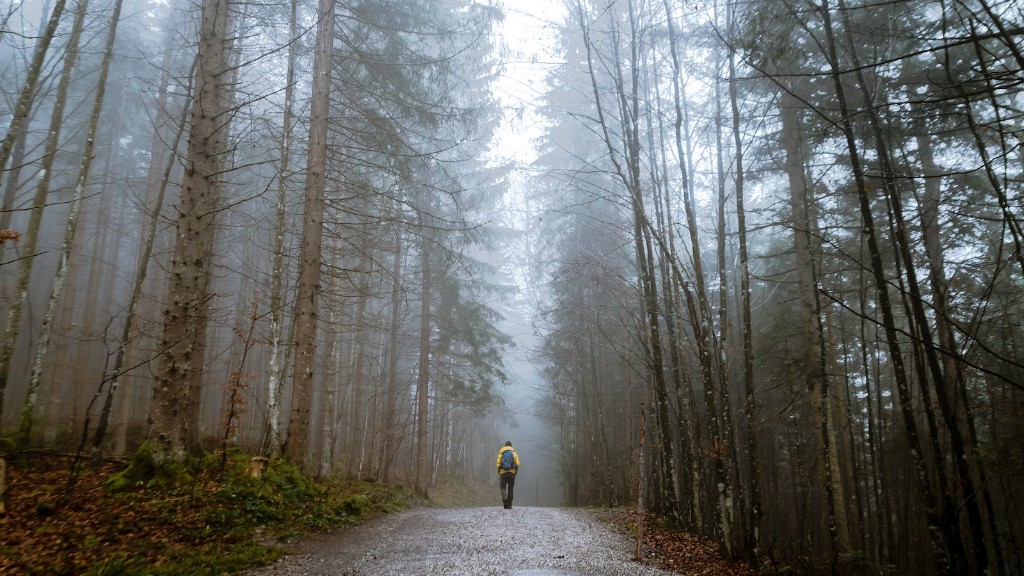Landforms in the Daintree Rainforest
The Daintree Rainforest, located in Queensland, Australia, is one of the most diverse and ecologically significant ecosystems on our planet. With an estimated age of over 180 million years, it has evolved unique landforms that support a wide variety of flora and fauna. In this article, we will explore the remarkable landforms found in the Daintree Rainforest and delve into the geological processes that have shaped this ancient landscape.
One of the dominant landforms in the Daintree Rainforest is the rugged mountains that rise majestically from the earth. The area is characterized by steep slopes and deep valleys, carved out by the force of ancient rivers. These mountains provide a dramatic backdrop to the lush vegetation and are home to many endemic species. Formed through the collision of tectonic plates and subsequent erosion, these mountain ranges contribute to the overall biodiversity of the rainforest.
Another fascinating landform present in the Daintree Rainforest is the extensive network of rivers and streams. The Mossman River, for example, meanders through the heart of the rainforest, creating a diverse range of microhabitats along its course. These waterways not only provide a vital source of hydration for the flora and fauna but also act as natural highways, allowing for the dispersal of seeds and the movement of wildlife.
The Daintree Rainforest is also blessed with breath-taking beaches and coastal features. Fringed by the Coral Sea, the rainforest meets the ocean in a spectacular display of natural beauty. The coastline boasts pristine stretches of sand, interspersed with rocky cliffs and headlands. A popular tourist destination, these coastal landforms offer visitors a chance to explore both terrestrial and marine ecosystems within close proximity.
The geological history of the Daintree Rainforest is closely linked to the formation of the Great Barrier Reef. Over millions of years, as the sea level fluctuated, coral reefs and their limestone skeletons were pushed up to form elevated terraces. These landforms, known as the coastal plains, provide prime agricultural land but are also essential for the survival of the rainforest. Due to their elevated nature, the coastal plains offer more favorable growing conditions for a wide range of plant species.
Experts believe that the landforms in the Daintree Rainforest have contributed significantly to its exceptional biodiversity. The complex topography, with its varying elevations, has led to the formation of multiple microclimates, each supporting its distinct array of plants and animals. As a result, the Daintree Rainforest is home to an estimated 30% of Australia’s reptile, frog, and marsupial species, making it a globally recognized hotspot for biodiversity.
It is important to understand and appreciate the landforms of the Daintree Rainforest to ensure its long-term conservation and preservation. Efforts to protect this unique ecosystem have been ongoing, with organizations working together to address issues such as deforestation, climate change, and pollution.
Ecosystem Services Provided by the Rainforest
In addition to its aesthetic and ecological value, the Daintree Rainforest also provides a range of vital ecosystem services. These include water filtration, carbon sequestration, and supporting sustainable tourism. The vast network of rivers and streams act as natural filters, purifying water before it reaches downstream areas. The rainforest’s dense vegetation also plays a crucial role in absorbing and storing carbon dioxide, helping to mitigate climate change.
Furthermore, the Daintree Rainforest is a magnet for eco-tourism, attracting thousands of visitors each year. Sustainable tourism practices, such as guided walks and low-impact accommodations, have been put in place to ensure that the rainforest’s natural beauty remains intact, while also providing local communities with economic opportunities.
Threats to the Daintree Rainforest
Despite its remarkable natural value, the Daintree Rainforest faces various threats that pose risks to its continued existence. One of the primary concerns is deforestation, driven by agricultural expansion and urban development. Conversion of the rainforest into farmland not only destroys vital habitat but also disrupts the delicate balance of the ecosystem.
Climate change is another significant threat to the Daintree Rainforest. Rising temperatures, changing rainfall patterns, and increased frequency of extreme weather events can have detrimental effects on the rainforest’s flora and fauna. The delicate balance of the ecosystem could be disrupted, potentially leading to the decline and loss of many species.
Conservation Efforts
Recognizing the importance of the Daintree Rainforest, numerous conservation efforts have been initiated to safeguard this unique ecosystem. Organizations such as the Daintree Rainforest Foundation and the Wet Tropics Management Authority work towards preserving the rainforest’s biodiversity through research, habitat restoration, and public education programs.
Government regulations also play a vital role in protecting the Daintree Rainforest. The Queensland government has implemented land-use zoning and development restrictions to ensure sustainable management practices. Additionally, collaborations with indigenous communities have been fostered, recognizing their traditional knowledge and rights in managing the land.
The Future of the Daintree Rainforest
As we move forward, it is crucial to prioritize the preservation and sustainable management of the Daintree Rainforest. By promoting eco-tourism, implementing stricter conservation policies, and raising awareness about the rainforest’s significance, we can contribute to its long-term survival. The Daintree Rainforest, with all its extraordinary landforms and diverse flora and fauna, is a testament to the beauty and resilience of nature. Let us work together to protect this natural treasure for generations to come.



